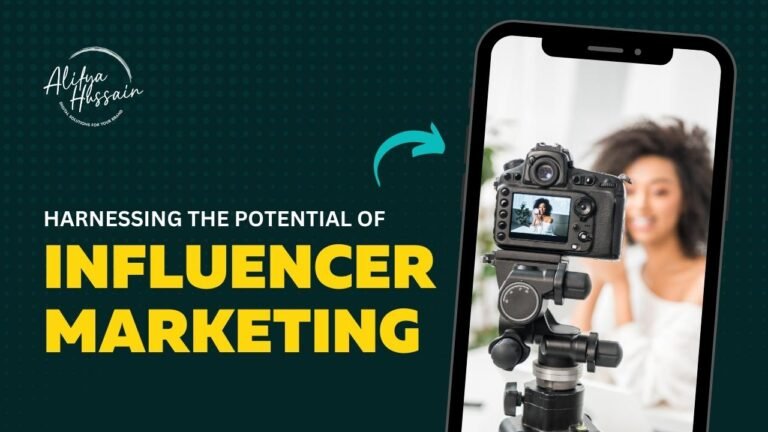Introduction to Content Marketing
In today’s digital landscape, content marketing has become an indispensable strategy for businesses looking to build their brand, engage their audience, and drive sustainable growth. In this article, we will explore the importance of content marketing and how it can be leveraged to achieve your marketing objectives.
Table of Contents:
- Introduction
- What is Content Marketing?
- Benefits of Content Marketing.
- Developing a Content Marketing Strategy
- Creating High-Quality and Engaging Content
- Optimizing Content for Search Engines
- Measuring and Analyzing Content Performance
- Evolving Your Content Marketing Strategy

What is Content Marketing?
Content marketing refers to the creation and distribution of valuable and relevant content to attract and retain a clearly defined audience. It involves developing and sharing informative, entertaining, and educational content that resonates with your target audience, ultimately driving profitable customer action.
Benefits of Content Marketing
- Enhanced Brand Visibility
- Targeted Audience Engagement
- Establishing Thought Leadership
Enhanced Brand Visibility
Through content marketing, you can increase your brand’s visibility by creating content that captures the attention of your target audience. By consistently delivering valuable content, you position your brand as an authority and build trust among your audience.
Targeted Audience Engagement
Content marketing allows you to connect with your target audience on a deeper level. By understanding their pain points, challenges, and interests, you can create content that addresses their needs and provides solutions. This engagement builds a loyal community around your brand.
Establishing Thought Leadership
By consistently producing high-quality and insightful content, you can establish yourself as a thought leader in your industry. Thought leadership enhances your brand’s reputation, attracts new customers, and opens doors to collaboration and partnership opportunities.
Developing a Content Marketing Strategy
To harness the full potential of content marketing, it’s essential to develop a comprehensive strategy that aligns with your business goals and target audience.
- Defining Your Goals
- Understanding Your Target Audience
- Content Creation and Distribution Channels
Defining Your Goals
Clearly define your content marketing goals, whether it’s increasing brand awareness, driving website traffic, generating leads, or boosting sales. Having specific goals in mind will guide your content creation and distribution efforts.
Understanding Your Target Audience
To create content that resonates with your audience, it’s crucial to have a deep understanding of their demographics, preferences, and pain points. Conduct market research, analyze customer data, and engage with your audience to gather insights that will shape your content strategy.
Content Creation and Distribution Channels
Choose the right content formats, such as blog articles, videos, infographics, podcasts, or social media posts, based on your audience’s preferences and the goals of your campaign. Identify the channels where your audience is most active and develop a distribution plan to maximize reach.
Creating High-Quality and Engaging Content
To capture your audience’s attention and keep them engaged, it’s important to create content that is valuable, relevant, and compelling.
- Researching and Identifying Topics
- Crafting Compelling Headlines
- Utilizing Different Content Formats
Researching and Identifying Topics
Perform keyword research and industry analysis to identify popular topics and trends within your niche. By addressing these topics in your content, you can attract organic search traffic and position your brand as an authority.
Crafting Compelling Headlines
Craft attention-grabbing headlines that entice your audience to click and read your content. Use power words, numbers, and emotional triggers to make your headlines irresistible.
Utilizing Different Content Formats
Experiment with different content formats to cater to different learning styles and preferences. Mix written content with visuals, videos, and interactive elements to create a rich and engaging user experience. If you need to make video content, try FlexClip AI Video Editor for making fancy videos.
Optimizing Content for Search Engines
To ensure your content reaches a wider audience, it’s crucial to optimize it for search engines.
- Keyword Research and Integration
- On-Page SEO Practices
- Link Building and Outreach
Keyword Research and Integration
Perform keyword research to identify relevant and high-volume keywords that align with your content’s topic. Integrate these keywords naturally throughout your content, including in headings, subheadings, and meta tags.
On-Page SEO Practices
Optimize your content’s on-page elements, such as meta titles, meta descriptions, URLs, and image alt tags, to improve its visibility in search engine results pages (SERPs).
Link Building and Outreach
Build high-quality backlinks to your content by reaching out to influencers, industry publications, and relevant websites. External links from authoritative sources can boost your content’s credibility and visibility.
Measuring and Analyzing Content Performance
To gauge the effectiveness of your content marketing efforts, it’s important to measure and analyze key metrics.
- Key Metrics to Track
- Using Analytics Tools
Key Metrics to Track
Monitor metrics such as website traffic, engagement rates, social shares, conversions, and ROI to evaluate the performance of your content. Use tools like Google Analytics, social media analytics platforms, and marketing automation software to gather and analyze data.
Using Analytics Tools
Leverage analytics tools to gain valuable insights into your audience’s behavior, preferences, and content consumption patterns. This data can inform future content decisions and help you refine your content marketing strategy.
Evolving Your Content Marketing Strategy
Content marketing is a dynamic field, and it’s important to stay updated with the latest trends and industry insights.
- Staying Updated with Trends and Industry Insights
- Experimenting and Iterating
Staying Updated with Trends and Industry Insights
Regularly follow industry blogs, attend conferences, and join relevant communities to stay informed about the latest content marketing trends and best practices. Adapt your strategy accordingly to leverage emerging opportunities.
Experimenting and Iterating
Continuously experiment with different content formats, distribution channels, and promotional tactics to identify what resonates most with your audience. Analyze the results and iterate your strategy based on data-driven insights.
Conclusion
In today’s digital landscape, content marketing plays a pivotal role in driving brand visibility, engaging target audiences, and achieving business growth. By implementing effective content marketing strategies, businesses can establish thought leadership, foster audience loyalty, and drive sustainable results. Contact Alifya Hussain, an expert digital marketer, for guidance and support in implementing a robust content marketing strategy that aligns with your business objectives.
Contact Alifya Hussain today to unlock the true potential of content marketing for your business. Reach out for expert advice and personalized strategies to drive engagement and growth.




